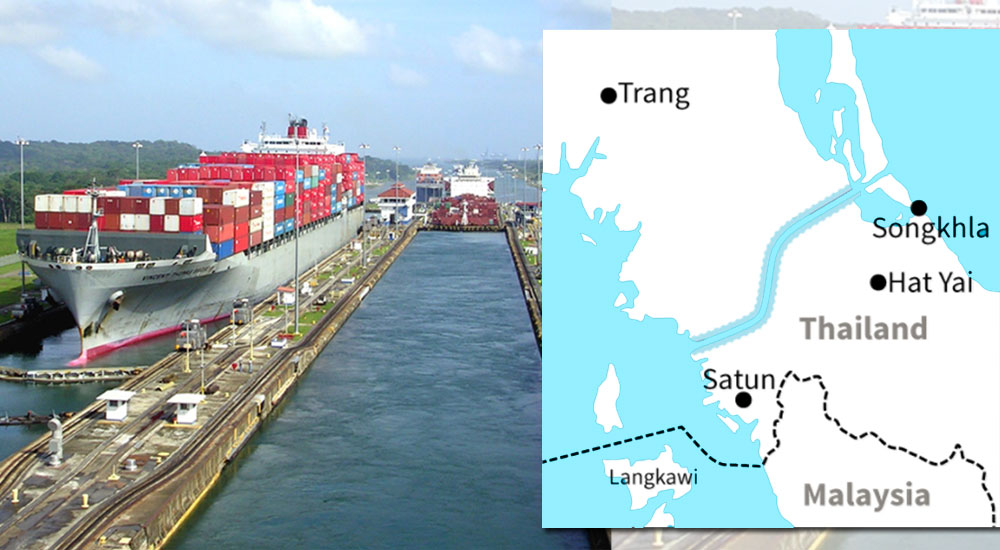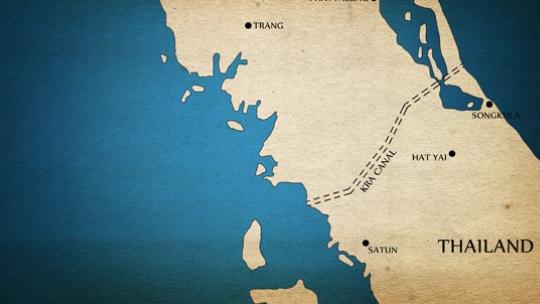According to Nikkei Asian Review, a faction of ex-military generals in Thailand are pushing for the construction of the Kra Canal.
And the plan is being championed aggressively under the auspices of these government-linked men with access to the corridors of power, along super ambitious budgets and deadlines.
How are they going about doing it?
The recent Aug. 7, 2017, Nikkei Asian Review report said a group of retired generals has formed an organisation called the Thai Canal Association for Study and Development.
In 2016, the group worked alongside researchers from Beijing's Peking University and a relatively unknown Chinese company to survey the proposed route.
Their plan is to lobby the military government of the day to okay a feasibility study. The most optimistic of projections estimates that the Kra Canal can be completed and be operational in a mere five years.
The Chinese company reportedly has provided funding for the Kra Canal study, even though it is not part of China's official Belt and Road Initiative.
Drumming up local support
The current military government is said to not have plans to see the Kra Canal construction come to pass, owing to its grand engineering and budgeting plans.
But that has not stopped the pro-Kra Canal advocacy groups from collecting 100,000 signatures supporting its construction. The supporters comprise of villagers that will be affected by the Kra Canal construction.
Moving forward, the generals aim to get the entire Thai population behind them by calling for a nationwide referendum.
[related_story]
At what cost?
The construction of the Kra Canal is expected to be US$28 billion (S$38.2 billion).
The canal can be funded in large part through China's multibillion-dollar Belt and Road and 21st Maritime Silk Road infrastructure initiatives -- if approved.
A special economic zone flanking the canal is estimated to be built at another US$22 billion (S$30 billion).
This puts the projected costs at upwards of S$68.2 billion.
What is the Kra Canal?
The proposed 135km shipping canal across Thailand's narrow Isthmus of Kra will link the Pacific and Indian oceans when completed.
It is seen as the Asian equivalent of the Suez or Panama canals.
It will be a shortcut route that will bypass Singapore ports.
It will be 450 metres wide and 26 metres deep. The canal will be capable of carrying the world's biggest oil tankers, container ships and bulk carriers.
The Kra Canal would cut across the Malay peninsula about 200km north of Thailand's border with Malaysia.
This is some 800km south of Bangkok.
What are the strategic advantages of the Kra Canal?
The canal would effectively bypass the Malacca Strait, which is the world's busiest trade route.
The Malacca Strait currently links China, Japan and other East Asian nations with the Middle East and Europe, Africa and India.
This is Singapore's maritime lifeline.
The distance saved for ships passing between the Indian and Pacific Oceans when using the Kra Canal would be at least 1,200km.
This is equivalent to two to three days of sailing time.
It would provide an alternative route to the Malacca Strait, which saw a record 84,000 vessels pass last year.
The Malacca Strait is approaching capacity.
Who would benefit?
The biggest beneficiaries would be Thailand and China.
The World Bank estimates that Thailand's output will be sluggish at just 3.3 percent between 2017 and 2019.
A new canal would be a shot in the arm for the kingdom and also lead to a major realignment of economic power in Southeast Asia.
The Kra Canal will be a shortcut to the Strait of Malacca, effectively bypassing Singapore.
Estimates suggest 30 percent of Malacca Strait shipping could move north to use the Kra Canal.
Many hurdles to construction though
However, public support for the canal in Thailand is mixed at best.
Although the Isthmus of Kra is just 45km wide at its narrowest point, the proposed canal could be at least 135km in length.
The building of the canal would have to avoid inland mountain ranges and this would make the Kra Canal 58km longer than its counterpart in Panama.
First proposed 350 years ago by Thai royalty, construction was held back by political, financial and technical obstacles.
A canal of such magnitude would also divide most of the Buddhist country from the insurgency-plagued and largely Muslim southern provinces.
Next step for canal advocates
Thai elder statesmen canal advocates intend to argue their case at an international conference in Bangkok in September 2017.
They are asking for the Kra Canal to be considered for inclusion in Beijing's BRI initiative and for the project to be funded by multiple countries, including Japan, the United States and Asean neighbours.
They are also looking to create an internationally-funded special economic zone.
Related articles:
The canal that will sink S’pore’s maritime-trade dominance is one step closer to fruition
If you like what you read, follow us on Facebook, Instagram, Twitter and Telegram to get the latest updates.


